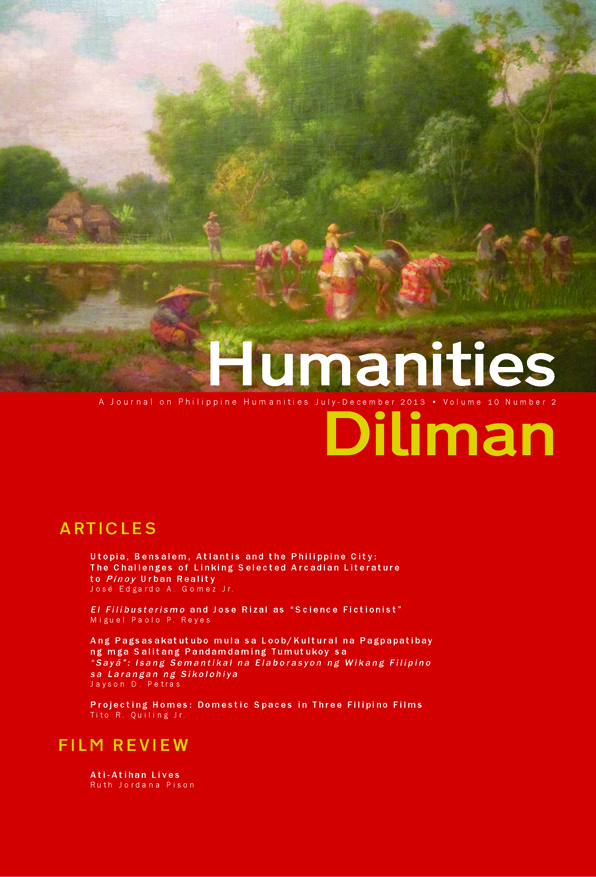Utopia, Bensalem, Atlantis and the Philippine City: The Challenges of Linking Selected Arcadian Literature to <em>Pinoy</em> Urban Reality
Abstract
Among the numerous wonderlands and other fanciful places extant in world literature since the 16th-century coining of the word “utopia” by Sir Thomas More, this study revisits three insular ideals whose enduring identities may be called upon to speak to present-day realities of an archipelagic nationstate like the Philippines. The full texts of More’s Utopia, Bacon’s New Atlantis, and Plato’s Atlantis are first reviewed under a historical lens to appreciate contextual aspects that could have influenced the authors’ writings. Next, selected characteristics are compared in so far as these emphasize how such imaginary societies define themselves, how ideal governance is attained, and what geospatial features are required. Using these as a basis, the author then proceeds to problematize how contemporary place-making and urban planning may be either compared or contrasted with such Arcadian literature in terms of civilization, rule of law, and spatiality. Based on the examination of the three texts and discussion of urban projects, the research suggests that while perceptions of historical context and the predisposition of geography have a theoretical influence on the written descriptions and aspirations to utopia, applying the same assumptions to the Philippine case is differently mediated by various factors, such as the urban legacies of a colonial past and the prevailing culture(s) and lay of the land.
Keywords: Utopia, historicism, urban ideal, city plan


